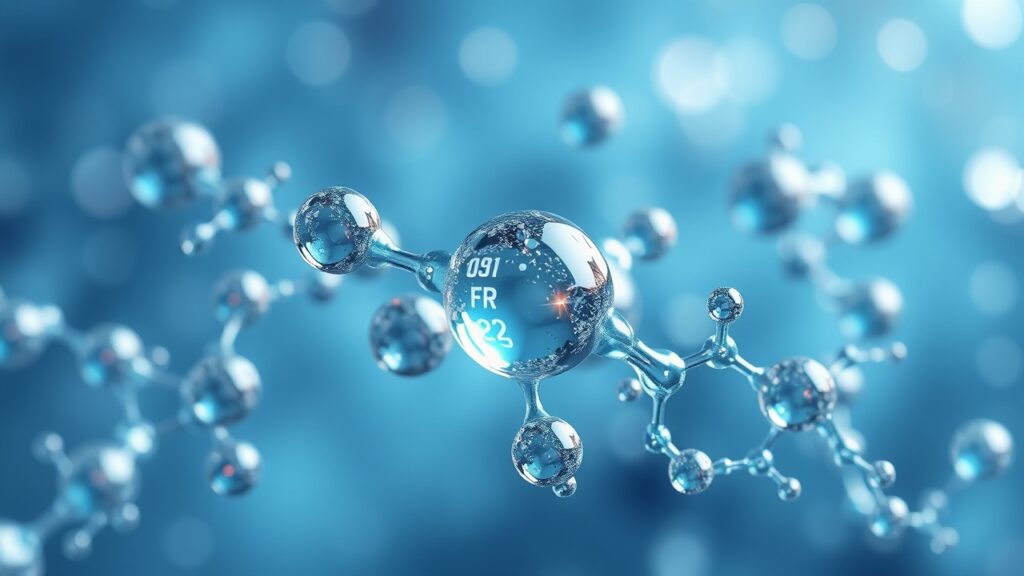Harnessing the Sun’s Energy: The Promise of Artificial Photosynthesis in Renewable Energy
Artificial photosynthesis is a pioneering concept that replicates the natural process of photosynthesis,
where plants convert sunlight, water, and carbon dioxide into energy-rich molecules.
This innovation in renewable energy has the potential to meet the increasing demand for sustainable energy sources and alleviate the environmental impact of fossil fuel consumption.
By leveraging the power of the sun, artificial photosynthesis presents a promising solution to the global energy crisis.
The concept of artificial photosynthesis involves utilizing advanced materials and catalysts to capture sunlight and initiate chemical reactions that produce clean energy.
Unlike traditional solar panels, which convert sunlight directly into electricity,
artificial photosynthesis aims to produce fuels such as hydrogen or hydrocarbons that can be stored and used as a renewable energy source.
This approach not only provides a means of storing solar energy for use during periods of low sunlight
but also offers a way to produce clean fuels for transportation and industrial applications.

The Science Behind Artificial Photosynthesis: How It Mimics Natural Photosynthesis
Light Absorption and Energy Generation
This process typically involves the use of semiconducting materials, such as titanium dioxide or silicon,
which can absorb sunlight and generate the electrical charge needed to drive chemical reactions.

Overcoming the Challenges of Water Splitting
One of the key challenges in mimicking natural photosynthesis is developing efficient catalysts that can facilitate the conversion of water into oxygen and hydrogen, a process known as water splitting.
This is a critical step in artificial photosynthesis, as it produces hydrogen gas, which can be used as a clean fuel for power generation and transportation.
Towards Sustainable Technologies
Researchers are also exploring new approaches to carbon dioxide reduction,
aiming to convert this greenhouse gas into valuable chemical products using renewable energy sources.
By understanding the science behind artificial photosynthesis, scientists are making significant strides towards developing sustainable technologies for renewable energy production.
Advantages of Artificial Photosynthesis: A Sustainable Solution for Renewable Energy
Artificial photosynthesis offers several advantages as a sustainable solution for renewable energy production.
Unlike traditional solar panels, which are limited by the availability of sunlight,
artificial photosynthesis can store solar energy in the form of chemical fuels, providing a reliable source of power even during periods of low sunlight.
This ability to store and transport renewable energy makes artificial photosynthesis an attractive option for
addressing the intermittency of solar power and meeting the demands of a modern energy grid.

Another advantage of artificial photosynthesis is its potential to produce clean fuels that can replace fossil fuels in transportation and industrial applications.
By converting water and carbon dioxide into hydrogen and hydrocarbons, artificial photosynthesis offers
a way to reduce greenhouse gas emissions and mitigate the environmental impact of conventional fuel production.
This sustainable approach to fuel generation has the potential to revolutionize the energy industry and contribute to global efforts to combat climate change.
Challenges and Innovations in Artificial Photosynthesis Technology
Despite its potential benefits, artificial photosynthesis faces several challenges that must be overcome
to realize its full potential as a renewable energy technology.
One of the primary challenges is developing efficient and durable materials for capturing sunlight and catalyzing chemical reactions.
While researchers have made significant progress in this area, there is still a need for advanced materials
that can operate at high efficiency and withstand harsh environmental conditions.

Another challenge in artificial photosynthesis technology is optimizing the overall system for converting solar energy into fuels.
This involves integrating various components, such as light absorbers, catalysts, and separation membranes,
into a functional device that can efficiently produce clean fuels.
Innovations in reactor design and system integration are essential for scaling up artificial photosynthesis
technology and making it commercially viable for large-scale energy production.
To address these challenges, researchers are exploring new approaches to materials design, catalyst development,
and system engineering that can enhance the performance and reliability of artificial photosynthesis technology.
By leveraging advances in nanotechnology, materials science, and chemical engineering,
scientists are driving innovations in artificial photosynthesis that have the potential to transform the renewable energy landscape.
Applications of Artificial Photosynthesis: From Fuel Production to Environmental Remediation
The applications of artificial photosynthesis extend beyond renewable energy production and encompass a wide range of environmental and industrial processes.
In addition to producing clean fuels for power generation and transportation, artificial photosynthesis can
be used to generate valuable chemical products, such as fertilizers, plastics, and pharmaceuticals, using renewable energy sources.
This approach offers a sustainable alternative to traditional chemical manufacturing methods that rely on fossil fuels and contribute to environmental pollution.
Furthermore, artificial photosynthesis has the potential to address environmental remediation challenges
by capturing carbon dioxide from industrial emissions and converting it into useful products.
By leveraging renewable energy sources, such as sunlight or wind power, artificial photosynthesis
can facilitate the conversion of carbon dioxide into building materials or chemical feedstocks, thereby reducing greenhouse gas emissions and mitigating climate change.
The versatility of artificial photosynthesis makes it a promising technology for addressing a wide range of societal needs,
from sustainable fuel production to environmental sustainability.
As research in this field continues to advance, the potential applications of artificial photosynthesis are expected to expand,
offering innovative solutions to pressing global challenges.
The Future of Artificial Photosynthesis: Implications for Global Energy Transition
Revolutionizing Energy Generation and Use
By harnessing the power of the sun to produce clean fuels and chemicals, artificial photosynthesis
has the potential to revolutionize the way we generate and use energy.
Enhancing Energy Security and Independence
In addition to its role in renewable energy production, artificial photosynthesis can
contribute to energy security by providing a decentralized source of power that is not dependent on finite resources or geopolitical factors.
This distributed approach to energy production can enhance resilience against disruptions and provide access to clean energy in remote or underserved regions.
Driving Innovations in Renewable Energy Technologies
The future of artificial photosynthesis is closely linked to ongoing advancements in materials science,
catalysis, and system integration, which are driving innovations in renewable energy technologies.
As research in this field continues to progress, the implications of artificial photosynthesis for global energy
transition are expected to become increasingly significant, shaping the future of sustainable energy production and consumption.
Collaborative Efforts in Research and Development: Driving the Progress of Artificial Photosynthesis
The progress of artificial photosynthesis as a renewable energy technology is driven by collaborative efforts
in research and development across academia, industry, and government institutions.
By bringing together expertise from diverse disciplines such as chemistry, physics, engineering,
and environmental science, collaborative research initiatives are advancing our understanding of artificial photosynthesis and accelerating the development of innovative technologies.
One example of collaborative efforts in artificial photosynthesis research is the Joint Center for Artificial Photosynthesis (JCAP), a U.S.

Department of Energy Energy Innovation Hub that brings together leading scientists and engineers from academia and national laboratories to advance solar fuels research.
Through collaborative projects and shared resources, JCAP is driving breakthroughs in materials design,
catalyst development, and system integration that are essential for realizing the potential of artificial photosynthesis as a renewable energy technology.
In addition to research collaborations, public-private partnerships are playing a crucial role in advancing artificial photosynthesis technology towards commercialization.
By leveraging industry expertise and resources, these partnerships are accelerating the translation
of scientific discoveries into practical applications that can address real-world energy challenges.
Furthermore, government support through funding initiatives and policy incentives is essential for driving
the progress of artificial photosynthesis research and development on a global scale.
In conclusion, harnessing the sun’s energy through artificial photosynthesis holds great promise for addressing
the growing demand for sustainable energy sources and mitigating the environmental impact of fossil fuel consumption.
By understanding the science behind artificial photosynthesis, exploring its potential applications,
and addressing key challenges through collaborative research efforts, we can unlock the full potential of this revolutionary technology for global energy transition.
As we continue to innovate in this field, the implications of artificial photosynthesis for renewable energy
production are expected to be increasingly significant, shaping the future of sustainable energy generation and consumption on a global scale.










More Stories
Turning Floods into Power: Surprising Potential of Rainwater
AI Pioneer & DeepMind CEO Demis Hassabis Wins 2024 Nobel Prize in Chemistry
Elon Musk’s Cyber Car: Driving into the Future